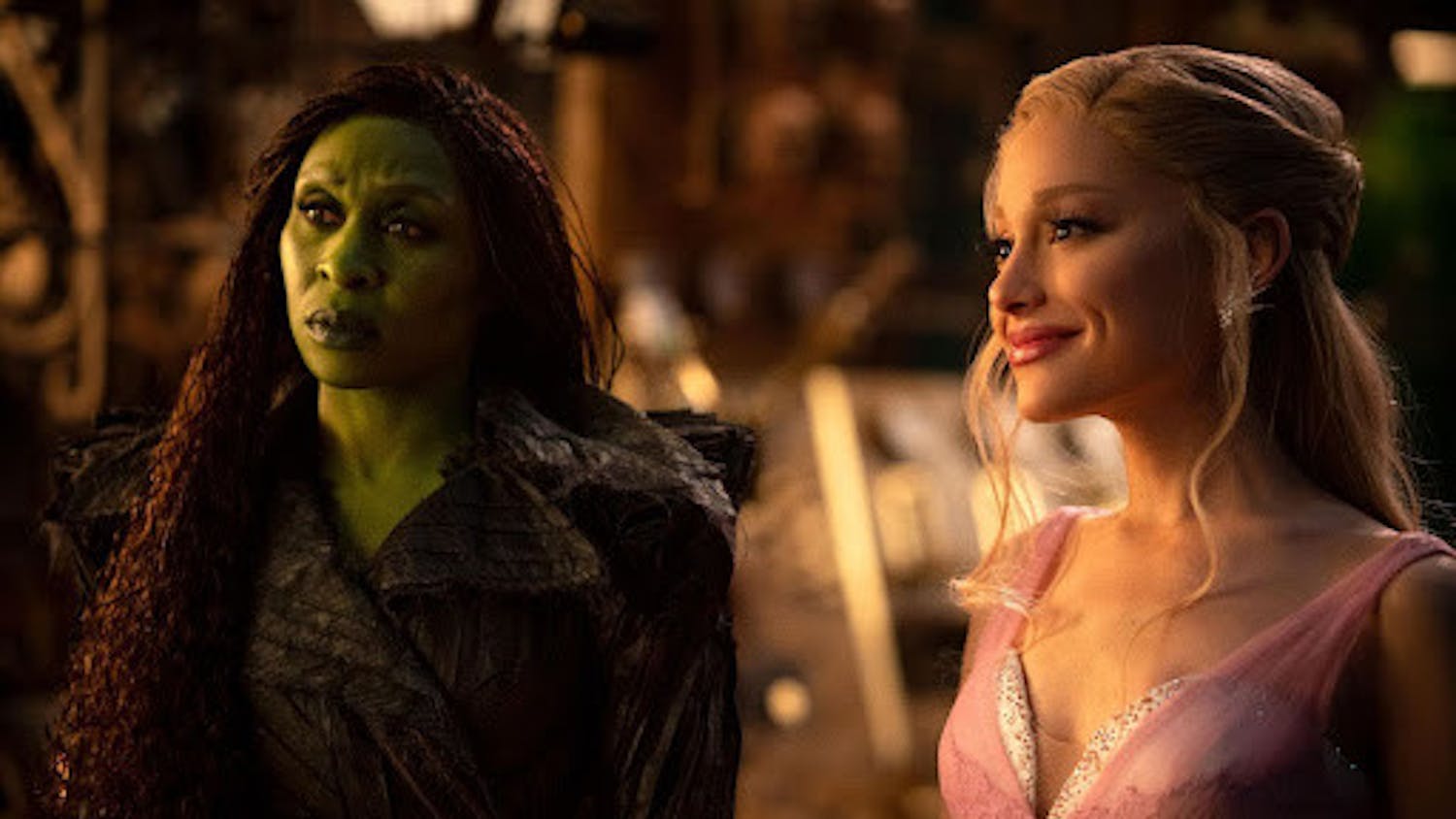It was Friday night, and despite the fact that only a handful of students were seated in the New Library Auditorium for a screening of the controversial documentary, "Incident at Oglala: The Leonard Peltier Story," the show had to go on.
Despite the low attendance, the Student Government Association (SGA) accomplished what it set out to do - open students' eyes to a compelling incident in United States history that has resulted in the imprisonment of a Native American man, who, according to many sources and substantial evidence featured in the documentary, may have been innocently caught up in a web of corruption and racial discrimination.
"We were thinking about what movie to show and then realized that the Native American consciousness is often not examined within the campus community," Joanna Holgu?n, SGA vice president of Equity and Diversity and organizer of the program, said. "Since this film presented a controversial incident, but also demonstrated an understanding of the history and culture of Native Americans, we thought it would be a good choice."
The 1992 documentary is a gripping film that examines the overtly unjust incrimination and conviction of Leonard Peltier, a Native American activist, who remains in prison to this day for the alleged 1973 murder of two FBI agents on the Pine Ridge Reservation in South Dakota. The murder occurred during a violent confrontation, known as the Pine Ridge Shoot-Out, between American Indian Movement (AIM) activists and FBI agents.
The film begins by describing the three-year period between 1973 and 1975, during which the vigilante group, referred to as the "goonsquad," began terrorizing, oppressing and killing Native American traditionalists on a reservation. The "goonsquad" was enlisted by the Tribal Council leader, Dick Wilson, who was a corrupt progressive-minded government supporter.
Several emotionally-charged interviews with Native Americans who recounted the tragic stories of their family members and friends being killed during this time were featured.
In the film, Wilson is depicted as being a "puppet of the U.S. government" who used government funds to equip his administration with the necessary means to keep Native Americans in their place and who had begun seeking assistance from AIM to fight back against the injustice. This dissension would eventually lead to the Wounded Knee Occupation, depicted in the film, which resulted in over 500 arrests and 180 indictments of AIM activists by the FBI, who brought heavy weapons and machinery to intimidate the movement.
The remainder of the film closely examines the controversy surrounding the arrest and indictment of Peltier from the perspectives of people who were closest to the case, including eyewitnesses, prosecuting and defense attorneys, Peltier's friends and supporters, law enforcement agents and even Peltier himself.
Amity Menard, freshman chemistry major, heard about the documentary screening and invited two of her friends to accompany her. "I didn't know anything about the topic before and it was interesting to see how corrupt the government was and how many different sides there (were) to one story," she said.
Jennifer Woodring, freshman chemistry major, agreed. "I had never known about this either," she said. "I never knew it happened."
Throughout the documentary the audience received conflicting arguments. Many of the law enforcement agents and government officials declared that Peltier was guilty of this murder and was fairly convicted.
On the other hand, Peltier's attorney, residents of Pine Ridge Indian Reservation, AIM activists and even witnesses in the trial painted an entirely different picture - a picture where the government and FBI tampered with crucial ballistics evidence, instilled fear of Native Americans into the minds of people in the community, accepted contradictory testimonies as fact and blatantly coerced people to get up on the witness stand and incriminate an innocent man.
At the end of the documentary, the real story of what happened at the Pine Ridge Shoot-Out was revealed, with a confession from a man who claims he in fact killed the two FBI agents, but only did so after the FBI agents opened fire on him first. Despite this alarming new information, which proved that Peltier could very well be innocent, he still remains in jail because the mystery man would not turn himself in.
Peltier speaks candidly from his jail cell about what he believed to be more of a conspiracy against his people than himself. He said that although he is innocent he has accepted his fate, and does not wish to have the man who did commit the crime incriminated because he does not want to contribute to the further oppression of any of his people. "The only thing I'm guilty of is struggling for my people," Peltier said. "I didn't kill anyone."
The SGA committee on Equity and Diversity, which organized this event, aims to use these programs as a way to promote an understanding of diversity on campus.
"Unfortunately, not many people came," Holgu?n said. "I think it was a result of not promoting enough. With the last event we had, The Affirmative Action Forum, we publicized a lot more. Also, it was a Friday night and there were a lot of events being held tonight."
Nevertheless, Holgu?n said she was happy with the event. "I think students (who attended) benefited from this program because they became more aware of things they didn't know about," she said. "It may have opened their eyes."






